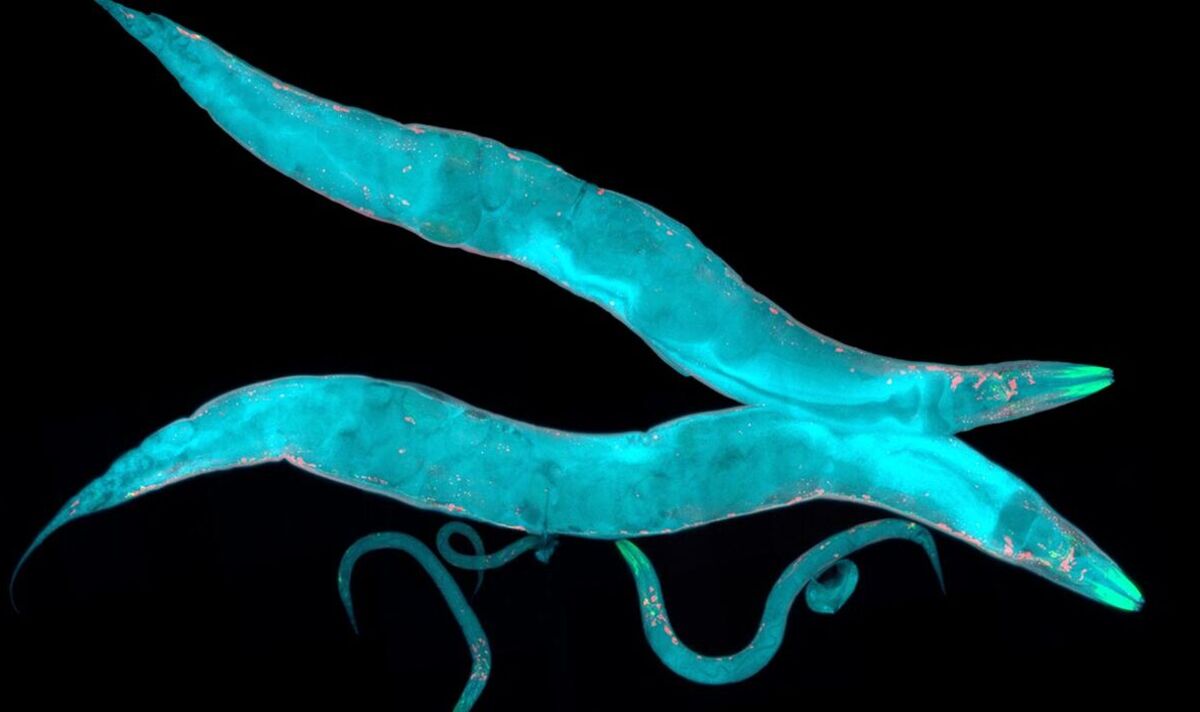Scientists predict date of next ICE AGE
An ancient worm which lived at the same time as mammoths and other ice age megafauna has come back to life after 46,000 years, a team of scientists has revealed.
The roundworm, which had been frozen in Siberian permafrost 40 metres below the surface in a state of suspended animation known as cryptobiosis, was revived during the course of the study.
By sequencing its genome, experts at Germany’s Max Planck Institute concluded it was a new species which they have named Panagrolaimus kolymaensis.
Cryptobiosis is a limbo-like state of extreme inactivity triggered by harsh environmental conditions.
Nematodes, tardigrades, and tiny aquatic organisms known as rotifers are known to enter cryptobiosis – but the longest recorded period among living worms is just 39 years.
READ MORE: UK satellite size of car set for Atlantic splashdown after mission ‘impossible'[ANALYSIS]
Researchers dated P. kolymaensis by analysing nearby vegetation, settling on an initial freezing period somewhere between 45,839 and 47,769 years ago.
This makes the species older than another nematode, of the genus Plectus, which was discovered in 2018, also frozen in Siberia, and which dates back to roughly 42,000 years ago.
Both species are double the age of an ancient rotifer from Siberia, revived recently after 24,000 years of cryptobiosis.
The compared the genomes of P. kolymaensis with Caenorhabditis elegans, one its closest living relatives, discovering numerous overlapping genes, many connected to mechanisms related to survival in harsh conditions.
Don’t miss…
Brexit Britain must seize on science superpower status outside EU
EU trying to hold UK ‘prisoner’ over access to £81bn scheme in Brexit outrage
Donut-shaped rock on Mars has space fans convinced there’s life on Red Planet
We use your sign-up to provide content in ways you’ve consented to and to improve our understanding of you. This may include adverts from us and 3rd parties based on our understanding. You can unsubscribe at any time. More info
C. elegans, however, generally lives in temperate areas, and is frequently found in rotting plants or fruit.
In their report, published yesterday in PLOS Genetics, the study’s authors: “Survival in extreme environments for prolonged periods is a challenge that only a few organisms, are capable of.”
The molecular and biochemical pathways utilised by such “cryptobiotic organisms” were not well understood, they added
They conclude: “Through comparative analysis, we find that P. kolymaensis and model organism C. elegans utilise similar adaptive mechanisms to survive harsh environmental conditions for prolonged periods.
“Our findings here are important for the understanding of evolutionary processes because generation times could be stretched from days to millennia, and long-term survival of individuals of species can lead to the refoundation of otherwise extinct lineages.”
Senior author Professor Teymuras Kurzchalia commented: “This little worm could now be in line for a Guinness World Record, having remained in a state of suspended animation for far longer than anyone thought was possible.
“That it could be reanimated after 46,000 years left me absolutely flabbergasted.
“It is rather like the fairy tale of Sleeping Beauty, but over a far longer period.”
Commenting, research group leader Dr Philipp Schiffer said: “Studying the adaptation of species to such extreme environments by analysing their genomes will allow us to develop better conservation strategies in the face of global warming.”
Source: Read Full Article





